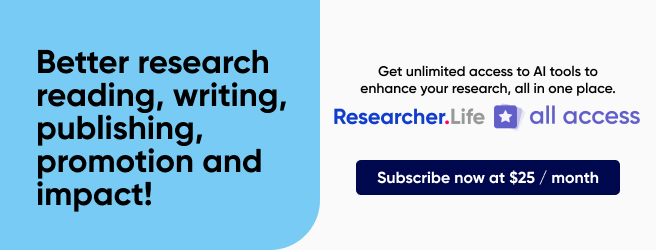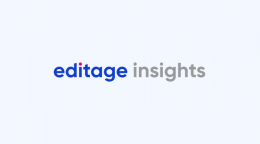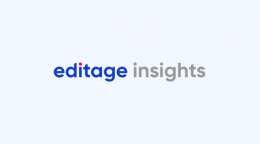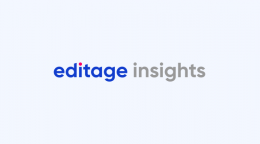Ethical declarations that authors should provide at the journal submission stage

Ethical declarations in research form an integral part during the submission process of a manuscript to a journal. During the process of submission, there are several questions and statements that you as the author need to respond to before submission. Let us look at all of these one-by-one.
Pre-submission considerations related to authorship
Before you submit your manuscript to the journal, you need to take into consideration some important aspects of authorship listed below:
- Ensure that all the authors mentioned in the manuscript have agreed for authorship, read and approved the manuscript, and given consent for submission and subsequent publication of the manuscript. (The authorship criteria should be based on the ICMJE guidelines.)
- The order of authorship must be agreed by all named authors prior to submission.
- Full names, institutional affiliations, highest degree obtained by the authors, e-mail address (in some cases, ORCiD ID and social media handles - Facebook, Twitter, or LinkedIn) need to be clearly mentioned on the title page.
- The corresponding author, who takes full ownership for all the communication related to the manuscript, should be designated and his/her detailed institutional affiliation (including the postal address, telephone number, fax number, and e-mail address) should be provided.
- Some journals ask for guarantors who may be the same as the corresponding author or a different person (a senior researcher in the group who oversees the progress of the research work). Depending on what your target journal expects of a guarantor, he/she may be responsible for the integrity of the manuscript (including ethics, data handling, reporting of results, and study conduct), would communicate with the journal if any technical clarifications related to the manuscript are required, and would handle similar responsibilities.
All the authors need to agree on the name(s) included in the Acknowledgement section.
Manuscript submission related declarations: When submitting your manuscript to a journal, you need to follow the policies and guidelines of the journal. Most journals expect authors to declare the following:
- The manuscript in part or in full has not been submitted or published anywhere. In other words, the authors should ensure that the manuscript is not a duplicate publication.
- The manuscript will not be submitted elsewhere until the editorial process is completed.
- If any part of the manuscript contains previously published content (figures/tables), authors should submit a statement of permission to reproduce the material signed by the author(s) and publishers concerned.
- When submitting material related to commercial products, it may, in some circumstances, be appropriate for the author to forward a copy of the contribution to the manufacturers before publication. This is to verify the correctness of the contents of the section in the manuscript that describes the new device/product.
- Authors should declare any previous or pending publication of the manuscript’s content in any conference proceedings, letters to journals and brief communications, or as pre-prints on repositories like arXiv, biorXiv, Figshare, etc.
- Authors should ensure that if the current study’s Abstract has been published in any conferences, it is either not under a copyright or that the embargo period is over. If the Abstract is under copyright protection from the publishers, permission should be sought for re-using the material.
- In case the manuscript is a secondary publication i.e. it is a subsequent republication that will be published in two or more journals (in the same or another language), the authors should explicitly declare this. Moreover, they should obtain mutual consent of the journal editors and follow the stipulated guidelines.
- If the manuscript is based on a dataset that has been the basis of another manuscript, authors should maintain transparency in such cases. They should declare that by referencing previously published article in the manuscript.
- If there is a data set associated with the manuscript, provide information about where the data supporting the results or analyses presented in the paper can be accessed. Where applicable, this should include the hyperlink to publicly archived datasets, DOI, or other persistent identifier associated with the data set(s). Always check the journal’s guidelines for specific templates or style in which this information should be presented. While describing a new software tool/ application, authors should host their project with a recognized open-source repository such as http://www.bioinformatics.org/ or https://sourceforge.net/. Information such as the project name, project home page, operating system(s), programming language, license, and any restrictions to use by non-academics should accompany the manuscript.
Statements of ethical approval for studies involving human subjects and/or animals
If your study involves human subjects and/or animals, and also if your manuscript includes case reports/case series, you need to provide the following:
- Authors must provide the name of the ethical approval committee/Institutional Review Board they have obtained consent from along with approval number/ID.
- Authors should specifically mention if a waiver was obtained for the study and reason for the waiver. They should confirm that the study was conducted in accordance with Helsinki Declaration as revised in 2013.
- Authors must state that written informed consent was obtained from the participants of the study (and the relevant document(s) must be provided when requested by the journal). If verbal informed consent was obtained, the reason(s) for the absence of written consent must be provided.
- For case reports/case series involving minor subjects/children/infants, authors should confirm that the statements of written informed consent from legally authorized representatives/parents/guardians are available; if verbal informed consent was obtained, reasons for this must be mentioned.
- Since patients have a right to privacy, identifying information (including patients’ images, names, initials, or hospital numbers) should not be included in recordings, written descriptions, or photographs, unless the information is essential for scientific purposes. In any case, written informed consent from the patient must be obtained for publication of these graphics in print and electronic form. If such consent has not been obtained, personal details of patients in any part of the paper and in any supplementary materials (including illustrations) must be removed before submission.
Declarations specific to article types
We have looked at the declarations related to manuscript submission and when your study involves human or animal subjects. Let us now turn to specific article types and the declarations you need to prepare when submitting them.
1. Clinical trials: Clinical trials that prospectively assign human participants to one or more health-related interventions to evaluate the effects on health outcomes (such as drugs, surgical procedures, devices, behavioural treatments, dietary interventions, and process-of-care changes) must conform to CONSORT guidelines. They must provide a confirmation that the guidelines have been followed, which should be submitted with their protocols.For randomized controlled trial, please state the International Standard Randomised Controlled Trial Number (ISRCTN) or the trial registry and trial registration number recognized by ICMJE or WHO ICTRP.
If your clinical trial was not registered or if the registration is not applicable to your study, you must state the reason(s) as to why it was not done. Many journals accept retrospectively registered studies too. Hence, if you have not registered your study prior to starting the trial, you may do so mid-way or after completion of the study.
Since there are several different types of studies, please ensure that your research work conforms to the specific guidelines as specified in EQUATOR Network. For example, case reports must follow CARE Guidelines and observational studies must follow STROBE Guidelines. The respective checklists must be submitted along with the manuscript during submission.
2. Reviews: Reviews do not need any ethical approvals or informed consent. However, many journals do ask the authors to explicitly state the reason as to why they are not required for the sake of transparency.
Other important declarations related to funding, conflicts of interest, and more
Apart from the declarations we have discussed, there are others that authors need to consider. Let us take a look at them:
1. Describing new taxa: Authors must provide relevant documents and unique digital identifier for manuscripts that describe new taxa or species. They should also declare that the relevant guidelines have been followed for algae, fungi and plants, zoological taxa, bacteria, and viruses. Registration numbers for the new species (for e.g. from MycoBank for fungi or ZooBank for zoological species) should be stated in the manuscript. New virus names should be sent to the relevant study groups for consideration before publication in a journal.
2. Authors’ contribution: The individual contributions of authors to the research work and writing of the manuscript should be specified in this section; for example, who conceived the study design, who did the data acquisition, who performed the experiments, who did the data analysis, who wrote the manuscript, etc. Authors should check journal-specific guidelines to declare the authors’ contribution.
3. Acknowledgments: Anyone who does not meet the authorship criteria, such as people who provided technical help, institutional/department head who provided general support, or medical writers who assisted with the preparation of the manuscript content, should be acknowledged. Even if the authors have no one to acknowledge, usually journals expect authors to include this section in the manuscript and write “Not applicable.”
4. Funding: All sources of funding for the research work and their role (if at all) in the design of the study and collection, analysis, interpretation of data, and in writing the manuscript should be declared. Provide the name(s) of the funding agency/agencies along with the grant number(s). If the study did not receive any funding, report the same.
5. Competing interests/conflict of interest: All financial and non-financial competing interests must be declared by the authors. Non-financial competing interests include a declaration of political, personal, religious, ideological, academic, and intellectual competing interests. Authors from pharmaceutical companies, or other commercial organizations that sponsor clinical trials, should declare these as competing interests on submission. They should adhere to Good Publication Practice guidelines for pharmaceutical companies (GPP3) in medical publications.
Authors should declare any personal conflict of interest including any association with consultancies; employment details; participation in advocacy groups; stock or share ownership, and any financial details with regard to grants; fees; honoraria, reimbursements royalties, and any registered patents. They should also declare any institutional conflict of interest i.e. if their employer has any financial interest in or is in conflict with the subject matter or materials discussed in the manuscript. If there is no disclosure, add the following statement: “No potential conflict of interest was reported by the authors.”
Though the list is quite exhaustive, it is mandatory and important that the authors declare all the above-mentioned statements to avoid un-submission of the manuscript. These declarations ensure ethical publication practices involving transparency and integrity in the publication of the manuscript. Many journals have their own templates for declaring these and they are available on their author guidelines webpage. Authors should download these forms, fill them, sign, and upload them along with the manuscript during submission.
Related reading:
Published on: Sep 18, 2018
Comments
You're looking to give wings to your academic career and publication journey. We like that!
Why don't we give you complete access! Create a free account and get unlimited access to all resources & a vibrant researcher community.

Subscribe to Journal Submission & Peer Review













